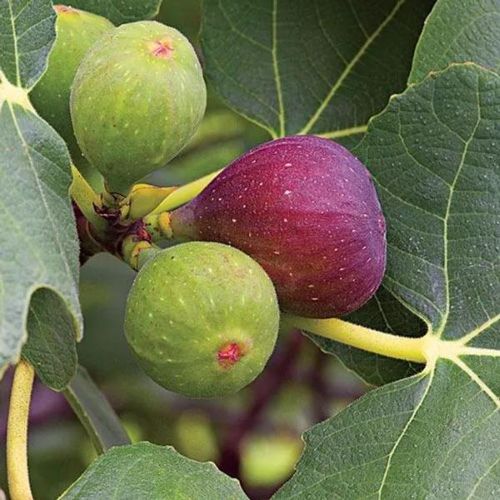
Live Plant
5 % Off on pre-paid purchase above 999/- COUPON:Newness- 5
10 % Off on pre-paid purchase above 1999/- COUPON :WELCOME-10
15 % Off on pre-paid purchase above 9999/- COUPON :SAVE-15
The "5-finger fig" may refer to a variety of fig known for its distinctive five-lobed leaves, such as the "Ficus carica 'Panache'" or "Ficus carica 'Variegata'." While figs are not typically grafted or hybridized in the same way as some other fruit trees, it is possible to find grafted fig trees, where a scion from a desired fig variety is attached onto the rootstock of another fig tree.
Grafting is often used in fig cultivation for a few reasons:
Hybridization is also a method used in fig breeding to create new varieties with desirable traits, such as improved flavor, texture, or adaptability to specific growing conditions.
Here are some general care tips for growing grafted or hybrid fig trees:
Climate: Figs thrive in warm, temperate climates, though they can be grown in cooler regions with protection. They require full sun to produce fruit effectively.
Soil: Plant your fig tree in well-draining soil with good fertility. Figs are adaptable to a variety of soil types but prefer slightly acidic to neutral soil pH.
Watering: Provide regular watering to your fig tree, especially during dry periods and while the fruits are developing. Water deeply to encourage deep root growth, but allow the soil to dry out slightly between waterings to prevent waterlogged conditions.
Fertilization: Figs are light feeders, but they can benefit from occasional fertilization to support healthy growth and fruit production. Use a balanced fertilizer and apply it sparingly, particularly if the tree is growing well.
Pruning: Prune your fig tree annually to remove dead or diseased wood, improve airflow within the canopy, and maintain its desired shape and size. Pruning can also help promote fruit production and reduce the risk of pest and disease problems.
Pest and Disease Control: Monitor your fig tree regularly for signs of pests, such as fig wasps, aphids, or scale insects, as well as diseases like fig rust or fig mosaic virus. Take appropriate measures, such as applying insecticides or fungicides, if necessary.
Harvesting: Figs typically mature in summer or early fall, depending on the variety and climate. Harvest the fruits when they are fully ripe and have developed their characteristic color and texture. Figs are usually harvested when they are soft and droop slightly on the tree.
By providing proper care and attention, your grafted or hybrid fig tree can thrive and produce an abundance of delicious fruit for many years. Enjoy the process of nurturing your tree and savoring the unique flavor and texture of homegrown figs!
NewnessPlant partnered with so many nursery and have few own nursery to fulfill all your needs and available any kind of plants and seeds.